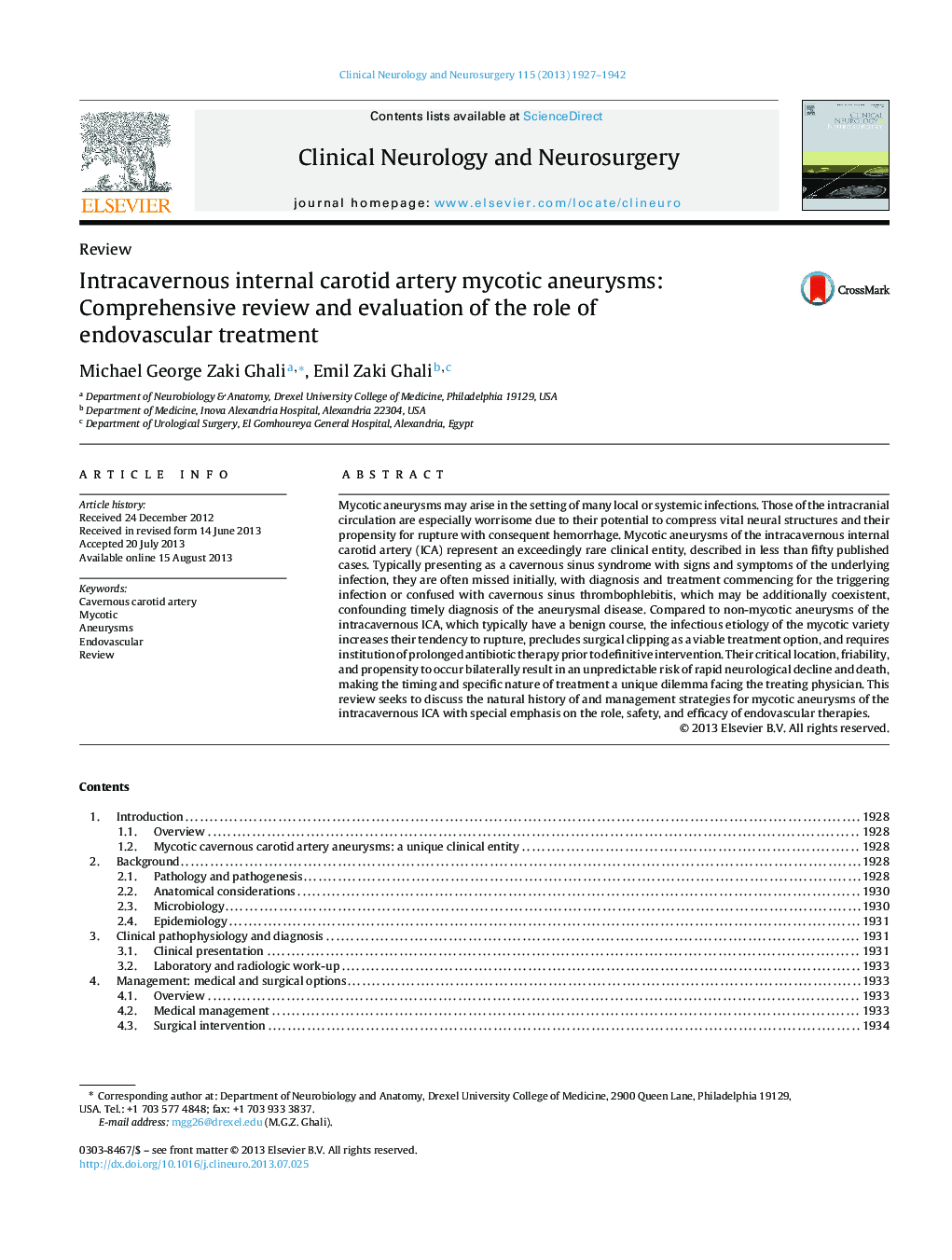| Article ID | Journal | Published Year | Pages | File Type |
|---|---|---|---|---|
| 6006526 | Clinical Neurology and Neurosurgery | 2013 | 16 Pages |
Abstract
Mycotic aneurysms may arise in the setting of many local or systemic infections. Those of the intracranial circulation are especially worrisome due to their potential to compress vital neural structures and their propensity for rupture with consequent hemorrhage. Mycotic aneurysms of the intracavernous internal carotid artery (ICA) represent an exceedingly rare clinical entity, described in less than fifty published cases. Typically presenting as a cavernous sinus syndrome with signs and symptoms of the underlying infection, they are often missed initially, with diagnosis and treatment commencing for the triggering infection or confused with cavernous sinus thrombophlebitis, which may be additionally coexistent, confounding timely diagnosis of the aneurysmal disease. Compared to non-mycotic aneurysms of the intracavernous ICA, which typically have a benign course, the infectious etiology of the mycotic variety increases their tendency to rupture, precludes surgical clipping as a viable treatment option, and requires institution of prolonged antibiotic therapy prior to definitive intervention. Their critical location, friability, and propensity to occur bilaterally result in an unpredictable risk of rapid neurological decline and death, making the timing and specific nature of treatment a unique dilemma facing the treating physician. This review seeks to discuss the natural history of and management strategies for mycotic aneurysms of the intracavernous ICA with special emphasis on the role, safety, and efficacy of endovascular therapies.
Keywords
Related Topics
Life Sciences
Neuroscience
Neurology
Authors
Michael George Zaki Ghali, Emil Zaki Ghali,
